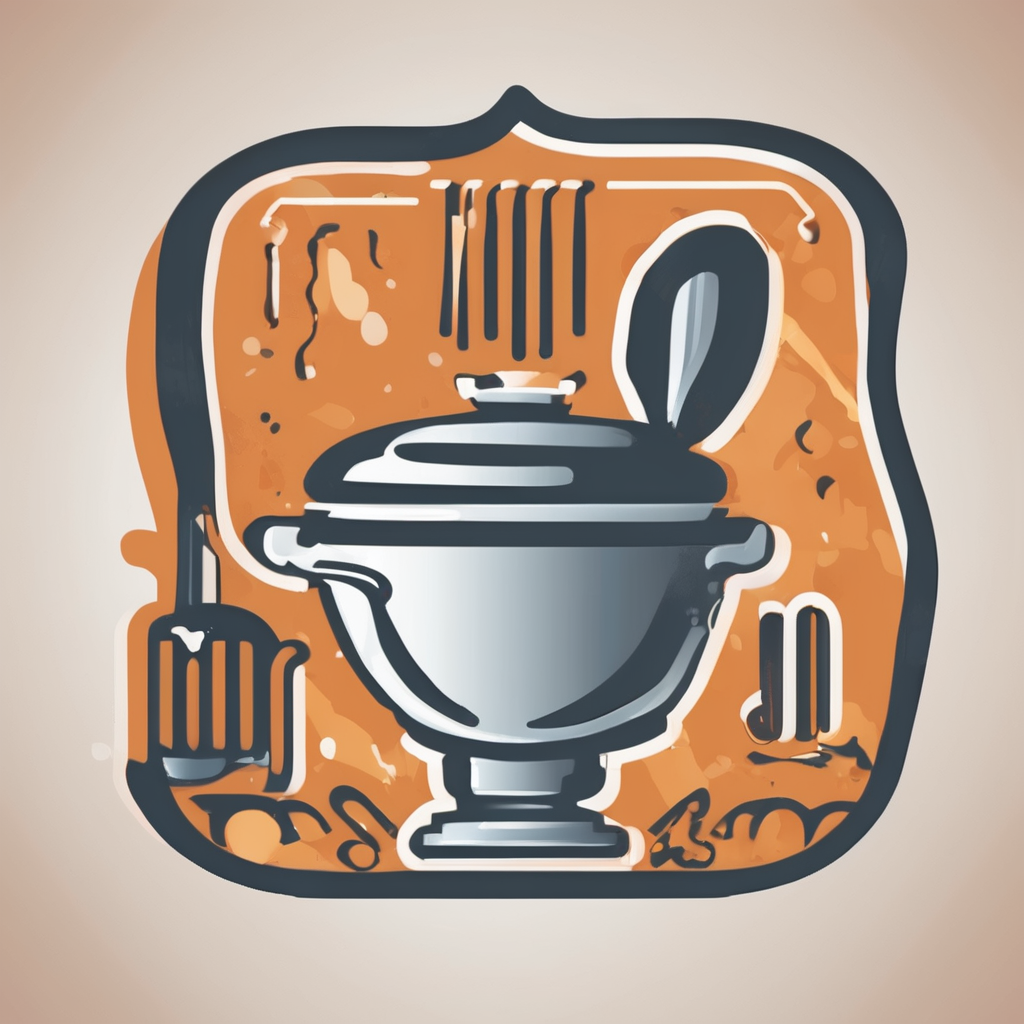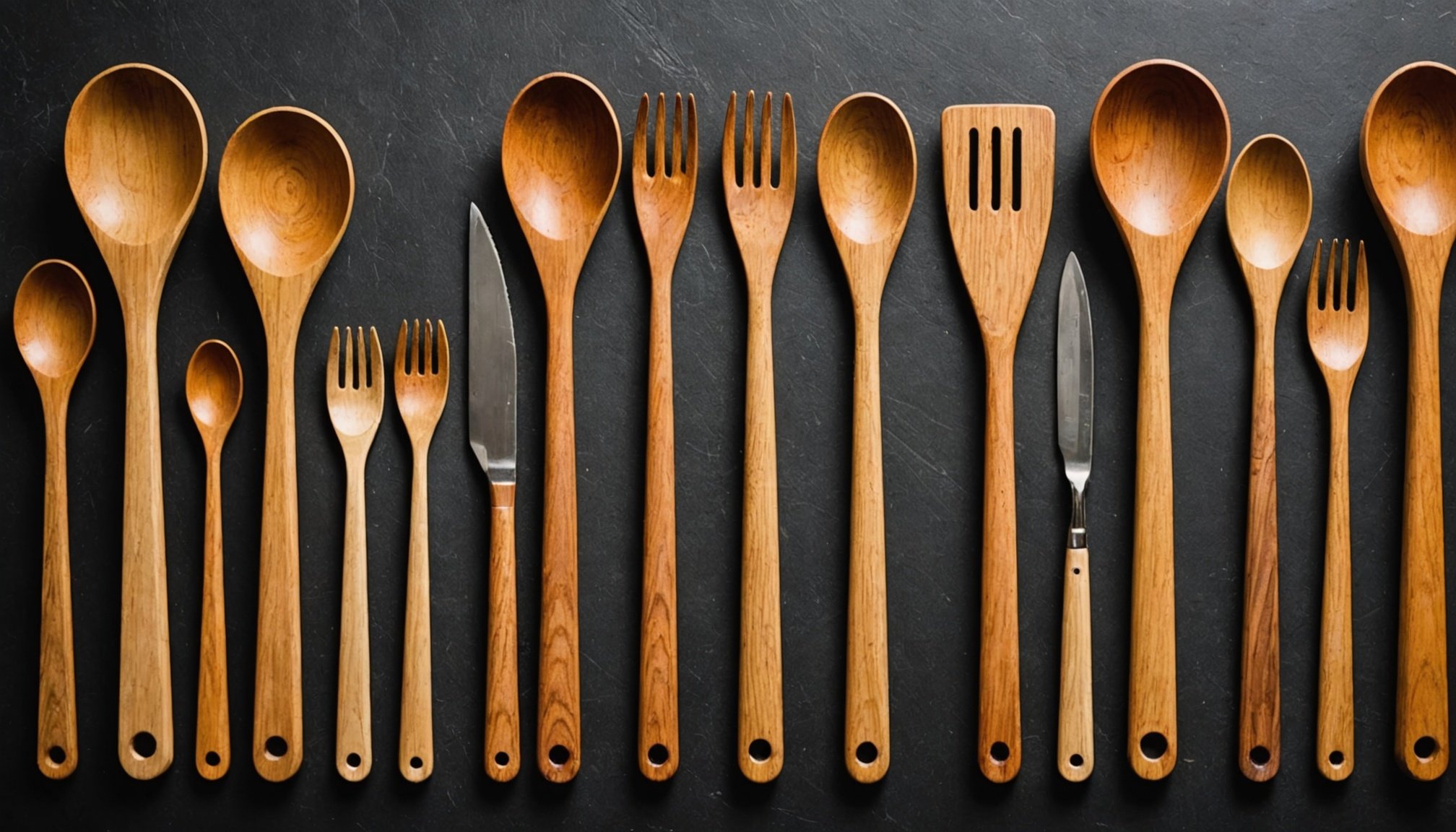Importance of Preserving Wooden Kitchen Utensils
Preserving wooden kitchen utensils is crucial for sustaining their benefits in culinary environments. These tools, cherished for their natural elements, provide a unique touch to cooking spaces. Their ability to handle delicate ingredients without scratching cookware has earned them a fundamental place in modern and traditional kitchens. Proper care and maintenance can significantly extend their life, ensuring you enjoy their benefits for years to come.
By maintaining wooden utensils, you contribute positively to the environment and your finances. Extending the longevity of your utensils reduces waste and the frequency of replacements, lessening your carbon footprint. Economically, investing a small amount of time and effort in their preservation means fewer purchases in the long run—an obvious win for both your pocket and the planet.
In parallel : Sipping into the future: latest news from the wine world
The process of preserving wooden kitchen utensils involves several straightforward steps. Regular washing with mild soap and warm water prevents food residue build-up, while thorough drying stops moisture absorption that can lead to warping or cracking. Periodic oiling with food-safe mineral oil keeps the wood hydrated, protecting its natural fibres from drying out. Such care not only enhances the utensil’s lifespan but also maintains its function and aesthetic appeal.
Best Cleaning Techniques for Wooden Utensils
Keeping wooden utensils in pristine condition requires specific cleaning techniques to ensure their longevity and hygiene.
In parallel : Mastering multi-zone kitchen design: your essential guide to creating spaces for varied cooking experiences
Recommended Cleaning Products
When it comes to how to clean wooden utensils, using the right cleaning products is crucial. Opt for mild dish soap combined with warm water as an effective and gentle cleanser. Avoid any harsh detergents or bleach, as these can strip the wood of its natural oils and cause damage over time.
Safe Cleaning Methods
Understanding the safest methods to maintain your wooden utensils is key. First and foremost, never soak them in water for extended periods, as this can lead to warping or splitting. Instead, wash them shortly after use with the suggested mild soap and warm water. A soft-bristled brush can aid in removing food residues without scratching the surface.
Frequency of Cleaning
Establishing a routine for cleaning is essential. Wooden utensils should be washed immediately after each use to prevent any lingering odours or bacteria build-up. It’s also beneficial to occasionally treat them with a light application of mineral oil to retain moisture and keep the wood from drying out.
By following these cleaning tips for wood, you ensure that your wooden utensils remain both functional and aesthetically pleasing for years to come.
Conditioning and Oiling Practices
Maintaining wooden utensils ensures their longevity and effectiveness in your kitchen. The role of oiling techniques is crucial in this preservation.
Types of Oils Suitable for Wooden Utensils
To condition your utensils efficiently, select the right oils. Mineral oil is highly recommended due to its non-toxicity and preservation abilities. For those preferring a sustainable option, coconut oil offers a safe, edible solution that enhances wood durability. However, avoid oils like olive or vegetable oil, which can go rancid over time.
Frequency of Oiling
The frequency of oiling depends on how often your wooden utensils are used. A general rule is to oil them once a month. Nonetheless, if your utensils are showing dryness or have lost their sheen, more frequent oiling might be necessary.
Step-by-step Oiling Process
- Clean the utensil: Wash and dry thoroughly before starting.
- Apply oil: Pour a small quantity of your chosen oil onto a clean cloth.
- Rub the oil: Gently rub the oil into the wood, covering every surface.
- Allow to soak in: Let the utensil sit overnight to absorb the oil.
- Wipe off excess: The next day, remove any surplus oil with a dry cloth.
This regular conditioning keeps wooden utensils not only appealing but also functional.
Storage Tips for Wooden Kitchen Utensils
Organizing wooden kitchen utensils correctly ensures their longevity and function. The best storage for wooden utensils involves both protecting and showcasing them effectively.
Ideal Storage Solutions
Finding the perfect storage option can enhance your kitchen’s usability and aesthetic. Consider using drawer organizers for utensil organization. This method secures utensils while keeping them accessible and tidy. If display is preferred, a countertop utensil holder is a stylish and practical choice. Ensure it’s spacious enough to prevent overcrowding, allowing each piece to breathe.
Avoiding Common Storage Mistakes
Avoid common pitfalls by keeping utensils away from moisture and heat. Placing them near stoves or in humid environments can warp or damage wooden structures. Always dry utensils thoroughly before storage to prevent mould growth and stickiness.
Benefits of Proper Storage
Proper storage of wooden utensils significantly prolongs their life. Storing them appropriately prevents unnecessary wear, keeping them in excellent condition. Over time, the benefits of intelligent storage include:
- Reduced replacement costs
- Enhanced kitchen organization
- Preservation of utensil quality
A well-organized kitchen encourages efficient cooking practices and supports a more pleasant kitchen environment. Consider these strategies to maximize utensil lifespan and maintain a clutter-free culinary space.
Common Mistakes to Avoid in the Care of Wooden Utensils
Caring for wooden utensils can sometimes be tricky if unaware of common pitfalls. Many users make mistakes in wooden utensils care that can shorten their lifespan. Firstly, a typical error is exposing these items to prolonged water contact. Wooden utensils are porous and can absorb water, leading to cracking and warping. Always avoid leaving them soaking in the sink.
Another frequent mistake in wooden utensils care is using a dishwasher for cleaning. The high heat and harsh detergents can cause significant damage to the wood. Instead, wash them gently by hand with mild soap and warm water. After cleaning, it’s crucial to dry them immediately with a towel to prevent moisture absorption and bacterial growth. These small steps can greatly extend the life of your utensils.
Users often overlook oiling, another essential aspect of care. Un-oiled utensils can become brittle over time. To keep them in top shape, periodically apply food-safe mineral oil or beeswax. This helps maintain a moisture barrier, protecting against splits and breaks.
By understanding what not to do and troubleshooting issues, you can enjoy your wooden utensils for many years. Addressing these care aspects will preserve the utensils’ beauty and functionality.
Benefits of Proper Maintenance
Properly maintaining wooden utensils offers a variety of significant advantages, particularly enhancing their durability and lifespan. By ensuring that these kitchen implements remain in optimal condition, users can enjoy them for extended periods, which reduces the need for frequent replacements. This not only conserves resources but also cuts down on expenses related to constantly buying new utensils.
Economic Benefits
The economic benefits of maintaining wooden utensils are noteworthy. Investing a little effort in care and upkeep translates to cost savings. Avoiding replacements due to breakage or wear allows households to allocate their budget elsewhere. Moreover, proper maintenance techniques like handwashing and timely oiling extend utensil life, ensuring they continue to function efficiently.
Environmental Impact
From an environmental standpoint, caring for wooden utensils reduces waste. As these items withstand the test of time, fewer resources are spent on producing new ones. This contributes positively to reducing overall consumption and minimizes environmental harm. By choosing longevity, users participate in responsible consumption practices.
Enhancing Kitchen Aesthetics
Preserving the appearance of wooden utensils also enhances kitchen aesthetics. Wooden utensils bring a natural charm and warmth to kitchen environments. Regular maintenance renders them not only functional but visually appealing, maintaining their natural beauty and complementing kitchen decor. This aesthetic appeal complements practical benefits, enriching the kitchen space.
Conclusion and Additional Resources
Ensuring the longevity of your wooden utensils involves more than regular maintenance; it opens a world to a community-rich experience. For those eager to delve deeper into this craft, myriad further reading on wooden utensils care exists. Many enthusiasts have compiled extensive guides and personal accounts that serve as a treasure trove of knowledge.
Engaging with this topic doesn’t have to be a solitary journey. Consider joining online community forums where like-minded individuals gather to share insights and provide support. These platforms often buzz with creativity, offering advice that stems from both expertise and everyday experience.
If you’re looking to refine or enhance your preservation techniques, connecting with experts is invaluable. Many professionals willingly share their tips and tricks, helping you maintain and appreciate your utensils’ quality. Exploring additional preservation resources can aid in perfecting your techniques, ensuring they remain in optimal condition for years to come.
Whether through reading or community engagement, exchanging experiences can enrich your understanding and enjoyment. Don’t hesitate to share your stories or challenges; they could be the key to someone else’s success. This relational aspect not only enhances your knowledge but also deepens your connection to the craft.











